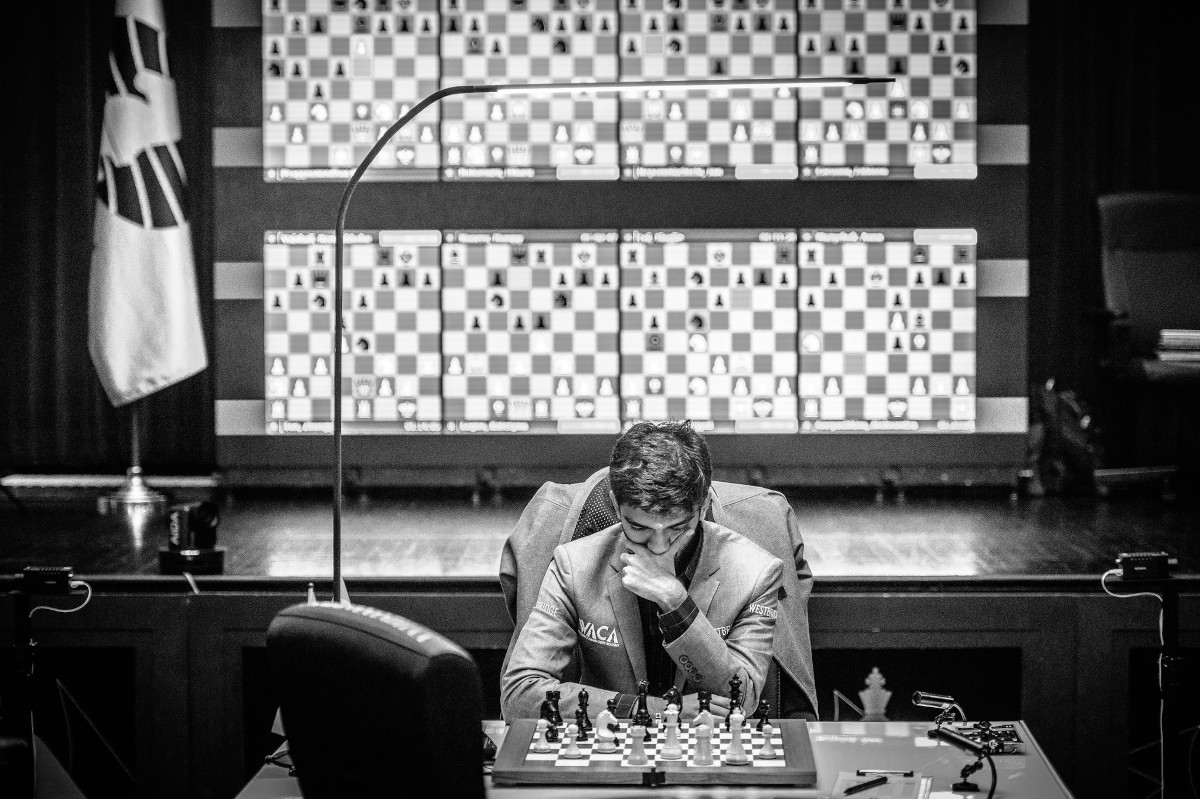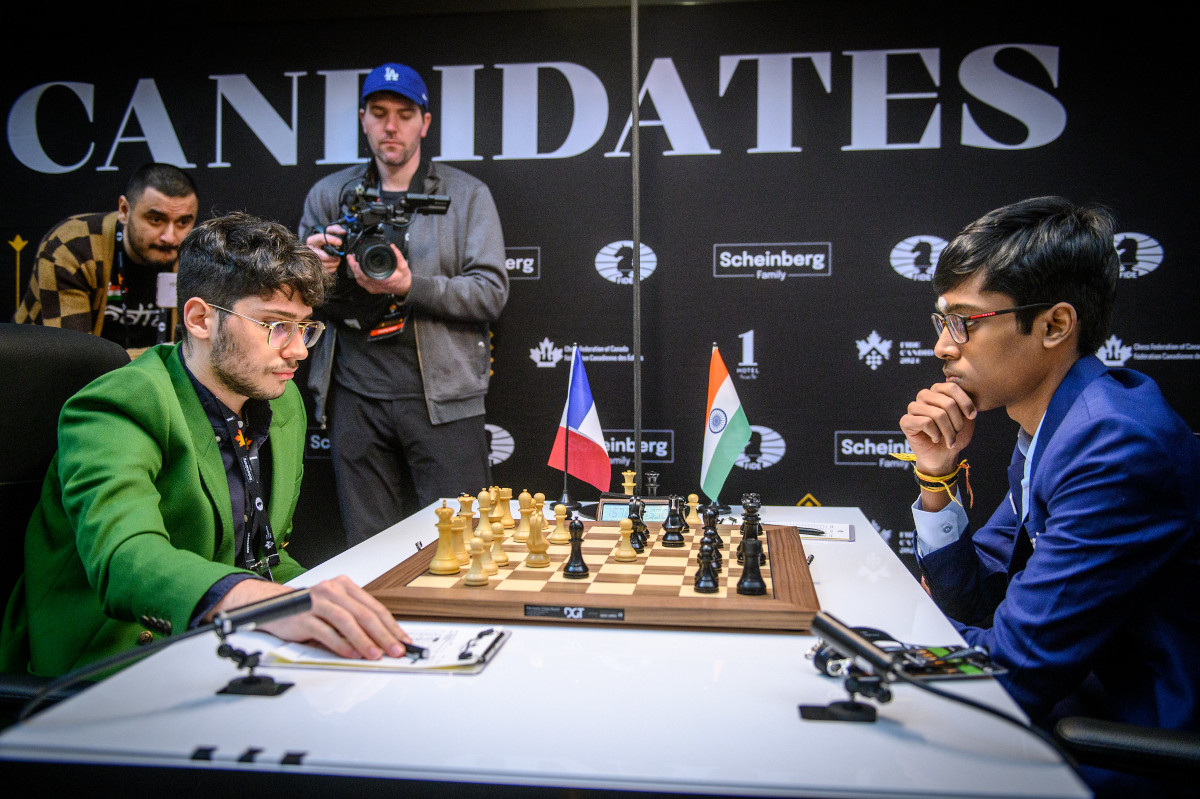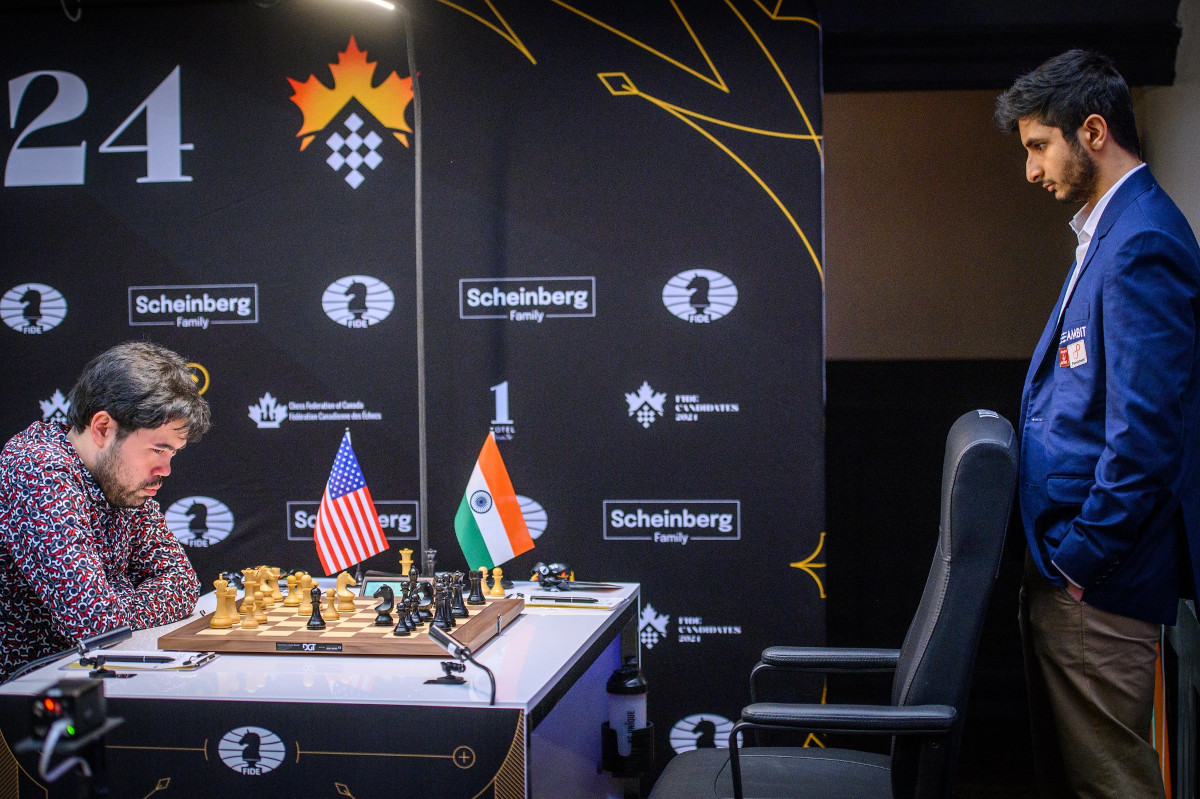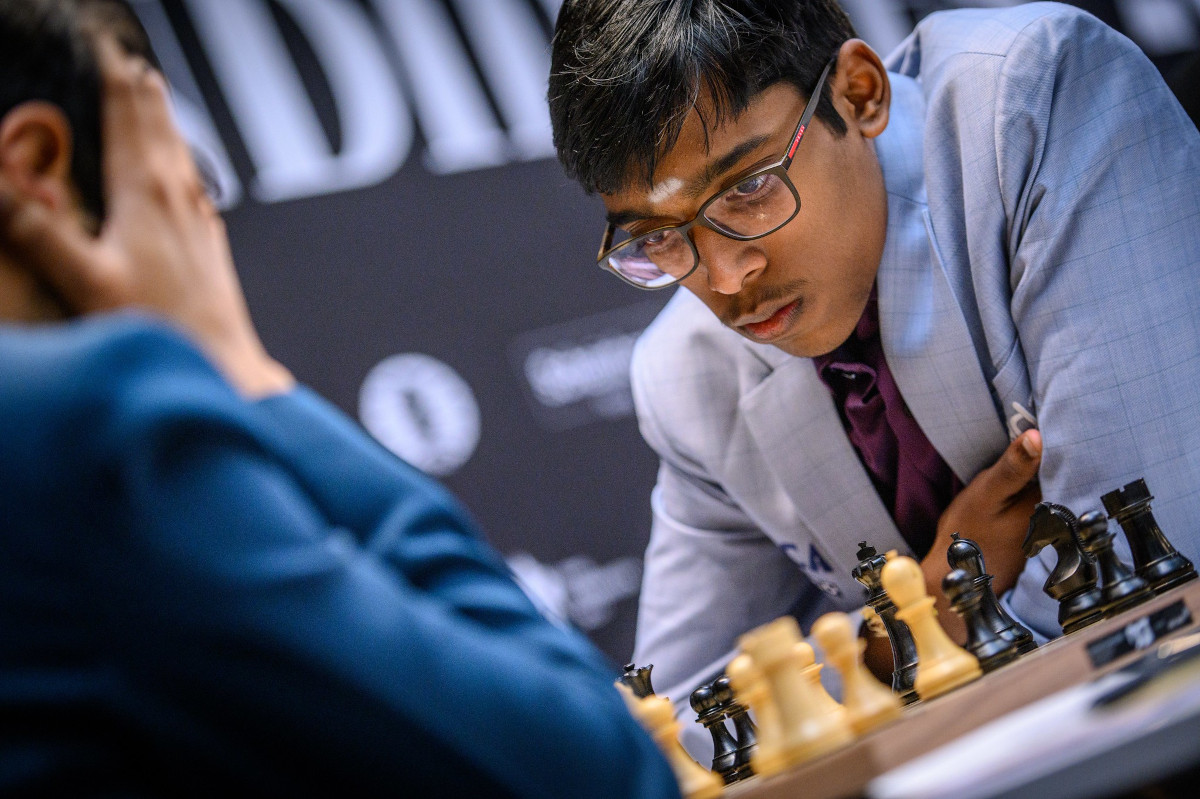


[Note that Jon Speelman also looks at the content of the article in video format, here embedded at the end of the article.]
The FIDE Candidates Tournaments are, if not the only, very much the main game in town, so I’m obviously going to write about them. I prefer not to leave things to the last moment, so I’m doing a preview before battle commences and then updates after each round reflecting what has actually occurred.
This may seem a little clunky, but it is worthwhile considering the outlines before matters are both crystallised and muddied by real games and results, and then trying to gauge the eddies after each round.
I had a look today (Wednesday) at the predictions by both Viswanathan Anand and Magnus Carlsen, and they were more or less in agreement, though I favoured Ian Nepomniachtchi rather more than them, perhaps out of ignorance of his specific results recently.
In any case, it’s not too difficult to separate the players into those with a decent chance of winning and becoming Ding’s challenger and those who will hope to have a decent result and gain invaluable experience for the future.
In the former group there are obviously Fabiano Caruana and Nepo, who have been Qorld Championship challengers previously. Hikaru Nakamura is also a potentially very strong contender. Somebody was telling me recently that he hasn’t won too many top-class classical tournaments, but he won the annual Norway tournament last May outright, ahead of Caruana, and that is a huge feather in his cap.
There is a rumour or maybe pre-rumour circulating today that Carlsen may be helping him. This wouldn’t be utterly “unprecedented” (I use the u-word in inverted commas since I’m known to advocate immediate death for its inappropriate public use) since players like Vladimir Kramnik have been seconds at times. But it would be a huge deal to be helped by the world’s strongest player as long as you had a strong enough ego not to be overwhelmed by him, and I’m sure that Hikaru does. By the time you read this, the rumour may conceivably have been substantiated or turn out to be an April fool confused by time zones (it appeared on April 2nd). Either way, Hikaru is a fantastic player and at his best might very possibly become the challenger. In fact, when I streamed on Friday I was told that it was a joke.
The fourth player whom I consider a fairly likely winner is Alireza Firouzja. He put such an enormous effort in December to get into the tournament that I imagine he must have done Stakhanovite work thereafter. One question though is whether he has a sufficiently powerful team around him to carry him to success in such a daunting tournament.

Alireza Firouzja | Photo: FIDE / Michal Walusza
Of the rest, Nijat Abasov is very clearly the bottom seed, and it would be extraordinary if he rose not just one but perhaps two levels to become a serious contender. However, he has demonstrated that he can win games against top class opponents, and so he may very well have a huge effect on the final outcome if he beats one or more of the contenders. This would likely happen fairly early on (or maybe in the final round(s) when he’s relieved that it’s finishing) because being at least perceived as the “tastiest fish” in such a tank of piranhas is likely to be enervating and dispiriting as the tournament progresses.
The three Indians are all very strong players, but I’d be surprised if they were in serious contention for first. Vidit Gujarati was very impressive in winning the FIDE Grand Swiss on the Isle of Man last November and played excellently at Wijk in January, becoming one of the five first equal going into the final round. But he blinked at the critical moment, being defeated by the eventual winner (of the play-offs) Wei Yi, and his rating at the moment is less than that of the two youngsters.
Both Dommaraju Gukesh and Rameshbabu Praggnanandhaa could very plausibly become world champions in the future, but they are probably still too young to become the challenger yet. I believe though that Peter Svidler is Pragg’s second, and he’s a wonderful choice: an enormously strong player with vast experience and a very nice man who should be easy to work with. Having him will certainly improve Pragg’s chances.
One thing I haven't mentioned is the pairings. The final round features Nakamura v. Gukesh, Firouzja v. Vidit, Abasov v. Pragg and Caruana v. Nepo, and if it’s close between Caruana and Nepo in particular, then this could be crucial.
I know much less about the players in the parallel Women’s Candidates Tournament. This is the first time that they've had a proper eight player double rounder and so, as Vishy pointed out, experience is likely to be crucial. Aleksandra Gioryachkina is currently the highest rated, but I believe that she has tended to do relatively better in open tournaments than women-only ones, so we shall see.

Aleksandra Goryachkina | Photo: FIDE / Michal Walusza
Regarding actual games, I’m going to pick just one from the previous Candidates Tournament in Madrid 2022. It is the first round battle between Ding and Nepo which set the tone for at least the first half of the tournament. Out of form, Ding lost badly, and it was only as a result of an amazing second half performance that he called himself up to second behind Nepo with the other game which I might have chosen as being most significant: Ding’s last-round victory against Nakamura.
As to games from Toronto itself, these have of course come under huge scrutiny already. But I am going to try to find some moments which I think are germane to the further progress of the tournament, as they reflect the players’ state of mind and form.
So they’re off and what a first-round it was, promising us, if things continue at anything like the same intensity, a fantastic tournament!
Of course, all four games were drawn, but the only relatively quiet one was Abasov v. Nepo, in which the bottom seed was understandably tentative and Nepo seemed relatively happy to start quietly too.
If things go according to the seedings then the battles of the Americans will likely be crucial, so Nakamura had a big decision to make in the opening as to what to play against Caruana. His choice (the extremely early ...e5) both reflected Nakamura’s belief (at least it seems that way) that Caruana is somewhat unbalanced in unusual openings, and was a form of damage limitation. Caruana got an initially relatively small and stable advantage and at one stage the engines gave him much more — indeed, they think he’s “winning”. But Nakamura defended himself staunchly, and a draw was a decent start for both of them — of course, appreciably more so for Nakamura because he was playing Black.
Gukesh v. Vidit quickly reached boiling point, but Gukesh sensibly found a way to pour cold water on the proceedings. Both of them look in decent form, but it’s not that easy to tell yet.
The game of the round was Firouzja v. Pragg. After a tense opening battle to which both had obviously poured considerable home preparation, this ended in ferocious hand-to-hand fighting. Both of them kept their balance (even if engines suggest improvements) and if they carry on playing like this then both will certainly win a number of games but also presumably lose some too.
In the great tournaments of the past, the players have tended to be fairly cautious at the start to try to play themselves in (at least that’s my impression, though I haven’t examined many in detail). There was very little of this on Thursday. It was more like the first lap of a Grand Prix, though the big crashes were avoided — just.

An instant classic: Alireza Firouzja v. Praggnanandhaa R | Photo: FIDE / Michal Walusza
Would you believe that round 2 was even better than round 1? All four games ended decisively, and only Caruana v. Abasov was relatively straightforward, as the top seed did what he had to.
Pragg v. Gukesh was a fierce battle which was balanced until near the end when it turned decisively in Gukesh’s favour, and Nepo’s win v Firouzja was even messier. But the game of the round was Nakamura v. Vidit in which Vidit unleashed a poisonous novelty and then kept control masterfully after Nakamura went wrong.
Two rounds is far too early to glean any definite conclusions but Caruana and Nepo look in very decent form, Firouzja and Naka have had shocks, and the way that Vidit has been playing, I’m already beginning to wonder whether I underestimated his chances to begin with.

Hikaru Nakamura was defeated by Vidit Gujrathi | Photo: FIDE / Michal Walusza
I didn’t watch much of round 3 live because my wife had dragged me kicking and screaming to a gig in Hove (Dr. Feelgood) which turned out to be a great deal better than I had expected.
After the incredible tension of the opening two rounds, this was appreciably quieter. Abasov continued his cautious approach against Nakamura and halved out as soon as he was able. Gukesh got an appreciable pull against Nepo, but it fizzled out, and Firouzja v. Caruana never strayed very far from equality.
The game of the round again involved Vidit, but this time it was he who was on the end of opening preparation at the hands of Pragg. Vidit must have been (more or less) on his own from very early on, and although Pragg apparently gave him a chance at one stage by castling long at an inauspicious moment, it was always White who was on the back foot — psychologically speaking at least — and in the end Pragg won pretty comfortably.
So here we are after three rounds with this column due to come out sometime during the fourth round. Caruana, Nepo and Gukesh are leading, and Nakamura and Firouzja look below par. Of course, there is a massively long way to go, but the overall impression is that these guys are going to beat each other to a pulp and that the level of opening preparation is terrifying.
What a lot of fun! See you in a month’s time.

Praggnanandhaa Rameshbabu | Photo: FIDE / Michal Walusza
Select an entry from the list to switch between games